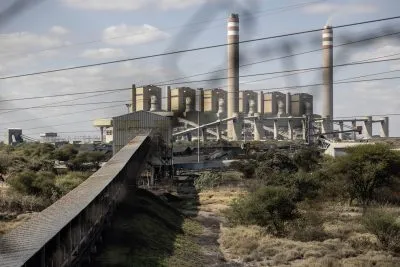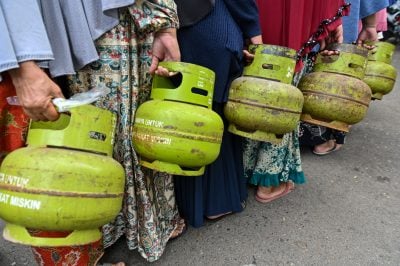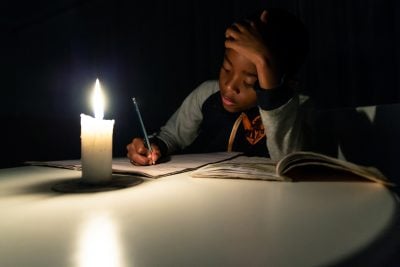Building dams has always been controversial, both in Africa and around the world.
A conventional hydropower project, in which a dam is constructed across a river and a valley is flooded to create a reservoir, can generate a huge amount of electricity. But these projects also tend to cause large-scale disruption.
As a valley is flooded, anyone living on the site of the new reservoir will be forced to leave their home. The largest projects have been known to displace massive numbers of people. Over one million people had to make way for the Three Gorges Dam in China, the world’s largest hydro scheme.
Dams also cause inevitable damage to biodiversity. Habitats are lost when land is flooded. Fish and other wildlife can be prevented from travelling upstream to reach their spawning grounds.
If a dam collapses – either due to poor construction or as a result of hazards such as earthquakes and cyclones – the consequences can be catastrophic. The 1975 Banqiao dam disaster in China, sparked by a tropical cyclone, killed an estimated 171,000 people.
Yet despite the litany of risks and challenges, Africa’s mighty river systems provide an enormous energy resource. Several African countries already rely on hydropower for the vast majority of their electricity needs. Achieving universal electricity access will be almost impossible for the continent without making greater use of its hydropower potential.
The good news for Africa is that longstanding technology exists to harness hydropower without the need to build large dams and reservoirs.
What is run-of-the-river hydro?
Run-of-the-river hydropower projects generate electricity in a very different way to conventional dams.
A dam stores water in a reservoir. When electricity is needed, water is released. It flows downwards through a pipe, turning a turbine and generating electricity.
In a run-of-the-river system, however, all or part of a river is diverted into a channel or pipe above a weir. As the water flows through the pipe, it turns a turbine to generate power, before being released back into the river further downstream.
There is typically no need for a large reservoir, although a run-of-the-river system will usually require a small “headpond” that forms above the weir.
“It’s less environmentally invasive, because you don’t have to do this large damming,” says Meron Tesfaye, senior policy analyst at the non-profit Energy for Growth Hub. This key advantage can often translate into “easier public acceptance,” she adds.
Although run-of-the-river projects are typically smaller, it is also possible to construct large projects. The proposed Ruzizi III project on the border of Burundi, Rwanda and DR Congo could generate 206 MW, enough to double Burundi’s electricity capacity. US firm Anzana Electric Group announced in June that it is set to join the $760m project.
“Ruzizi III will deliver sustainable, affordable, and reliable electricity to millions,” said Brian Kelly, CEO of Anzana, during the recent US-Africa Business Summit in Angola. He added that the project will “drive regional integration, strengthen energy security and stability, and pave the way for expanded US investment and trade in Africa’s energy future”.
“We don’t do dams”
From an investor perspective, a run-of-the-river hydro project is often more palatable than a conventional hydro scheme that is likely to come with far greater social and environmental complexities.
“We don’t do dams,” says Amit Mohan, head of private credit at Climate Fund Managers. “That’s out of our mandate, because of the environmental implications and impacts of dams. So, we can only do run-of-the-river hydro when it comes to this type of technology.”
CFM invested in the Achwa I run-of-the-river hydro project in Uganda, which was commissioned in 2021. The run-of-the-river technology used in this project “has less impact on the environment,” says Mohan. “There was no requirement to displace anybody.”
Achwa 1 has a capacity of 42 MW, and now helps provide power in a relatively remote area of northern Uganda where electricity access remains limited. Mohan says the project highlights how run-of-the-river can form a valuable part of the energy mix, helping to complement other sources of generation.
“Run-of-the-river hydro can help to balance out wind and solar and hopefully contribute to an energy dispatch regime that is robust from a consumer demand perspective, but also from a climate change perspective.”
Vulnerable to weather shifts
Despite the benefits of run-of-the-river, Tesfaye notes that there are inevitably some “trade-offs” with the technology.
The key pitfall is the lack of storage. Although some element of storage is possible depending on the design of the system, a run-of-the-river project does not have the same ability as a conventional dam to hold power in a reservoir and dispatch electricity when it is needed.
The amount of power that can be generated is also heavily influenced by seasonal variations in river flow. Reliability challenges are also increasingly evident even with conventional hydropower, particularly as climate change worsens drought conditions. Yet run-of-the-river, being dependent on river flow, is inherently more exposed.
Mohan acknowledges that electricity generation at Achwa 1 has been affected by climate fluctuations.
“What is clear is that climate change is impacting the resource, and it will impact the resource over a period of time,” he says. “We’ve seen variability that we didn’t expect, in terms of longer dry spells, and then all of a sudden there’s a very high rainfall period at times the year that we didn’t envisage.”
He notes that over a 12-month period, the project has a capacity factor of approximately 50%. This is fairly typical for a run-of-the-river scheme, although projects on some rivers where seasonal variation is less pronounced are likely to be capable of achieving a higher capacity factor.
And a silver lining is that the seasonal variations with run-of-the-river hydro actually enhance its ability to complement solar in the energy mix. During a dry period, power output from a run-of-the-river project will be lower, yet this should be offset by better conditions for generating solar power. When solar generation dips in rainy conditions, run-of-the-river hydro can step in to provide a constant electricity supply.
Riding the wave
Asked if CFM would consider investing in other projects similar to Achwa 1, Mohan responds positively.
“We would certainly look at other run-of-the-river hydro project opportunities to invest in on the African continent and elsewhere.”
There is indeed some evidence that run-of-the-river hydropower is gaining traction. Tesfaye estimates that around 7 GW of power capacity is available from operational run-of-the-river hydro schemes in Africa at present. This is roughly one-fifth of the capacity of conventional reservoir dams, which stands at 30 GW to 35 GW.
But Tesfaye notes that the capacity of run-of-the-river projects currently in the planning or construction stage adds up to 11 GW, compared to around 20 GW to 25 GW from conventional hydropower. In other words, it is clear that run-of-the-river is set to become more prominent, compared to conventional dams.
While any kind of hydropower project, including run-of-the-river schemes, is much more technically complicated than a solar or wind alternative, Tesfaye is convinced the continent needs to do more to develop its hydro resources.
“Africa’s hydro power potential is extremely under-tapped,” she says, noting that the continent is only harnessing 10-12% of its potential. “I think there’s a lot of room for African countries to expand their hydro potential, both in reservoir and run-of-the-river.”
Want to continue reading? Subscribe today.
You've read all your free articles for this month! Subscribe now to enjoy full access to our content.
Digital Monthly
£8.00 / month
Receive full unlimited access to our articles, opinions, podcasts and more.
Digital Yearly
£70.00 / year
Our best value offer - save £26 and gain access to all of our digital content for an entire year!

 Sign in with Google
Sign in with Google 



